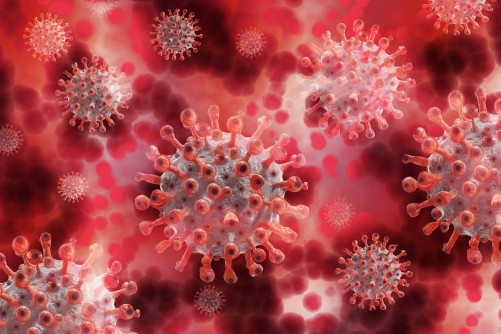Severe acute respiratory syndrome coronavirus 2 (SARS-CoV-2) is primarily transmitted person-to-person through the aerosolization of droplets containing contaminated nasopharyngeal secretions. Povidone iodine (PI) solutions at concentrations as low as 0.5% rapidly inactivate SARS-CoV-2 in vitro with contact times as short as 15 seconds. Guenezan, et al. (2021) investigated whether nasopharyngeal application of PI could reduce the viral load of patients with nonsevere coronavirus disease 2019 (COVID-19) symptoms.
The researchers included adult outpatients (≥18 years old) having tested highly positive (cycle threshold ≤20) for SARS-CoV-2 ribonucleic acid (RNA) by reverse transcription-polymerase chain reaction (RT-PCR) in nasopharyngeal swabs within the previous 48 hours. Patients with a history of thyroid disease were excluded.
Patients underwent an additional nasopharyngeal swab for viral quantification at baseline before being randomly assigned (1:1) to a control group (no intervention, n = 12) or an intervention group (n = 12). Intervention consisted of four successive mouthwashes and gargles with 25 mL of 1% aqueous PI solution each, followed by one 2.5-mL nasal pulverization of the same solution into each nostril using an intranasal mucosal atomization device connected to a 5-mL syringe while sniffing and 1 application on each nasal mucosa of a dab of 10% PI ointment followed by a massage of the nostril to help spread the ointment. Patients were trained during the first decolonization session, and received the necessary materials and a guide to help them perform the following sessions 4 times a day for 5 days.
Follow-up was done on day 1 and then every 2 days until day 7 to assess the efficacy (viral quantification) and safety of the decolonization. Almost all (>95%) of the nasopharyngeal swabs were taken by the same skilled nurse at least 3 hours after the last PI application for quantification of viral RNA using RT-PCR,3 and viral titer using the dilution limit method on Vero cells and the Spearman-Karber approach with a limit of detection of 102.5 tissue culture infectious dose (TCID50) per mL.4 Changes in viral load over time were compared between study groups using a linear mixed model for repeated measures.
All patients completed the study, and none required hospital admission. Compared with the control group, patients in the intervention group were younger. Median (IQR) age of patients in the control group was 57 (45-68) years and in the intervention group was 33 (23-46) years. A total of 4 patients (33%) in each group were male. All patients but 1 had negative viral titer by day 3. Use of PI had no influence on changes of viral RNA quantification over time. Mean relative difference in viral titers between baseline and day 1 was 75% (95% CI, 43%-95%) in the intervention group and 32% (95% CI, 10%-65%) in the control group (Figure). All patients exposed to PI experienced unpleasant nasal tingling but completed the study. Thyroid stimulating hormone elevation (median [IQR], 3.4 [2.6-4.3] mIU/L vs 2.1 [1.4-3.1] mIU/L at baseline) was observed in all patients after 5 days of PI exposure, exceeding the upper normal value in 5 patients, with a return to baseline values 7 to 12 days later. No modification in thyroid hormone (T3, T4) or creatinine levels was observed.
Reference: Guenezan J, et al. Povidone Iodine Mouthwash, Gargle, and Nasal Spray to Reduce Nasopharyngeal Viral Load in Patients With COVID-19: A Randomized Clinical Trial. JAMA Otolaryngol Head Neck Surg. Feb. 4, 2021. doi:10.1001/jamaoto.2020.5490

Be the first to comment on "Researchers Investigate Impact of Nasopharyngeal Application of Povidone Iodine on Viral Load of Patients With Nonsevere COVID-19 Symptoms"